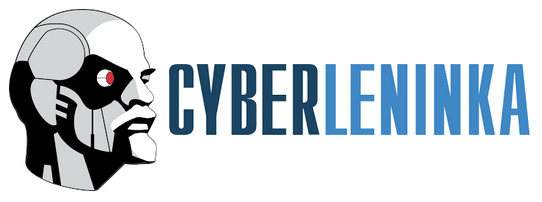ANALYSIS OF STUDENT NUMBER DYNAMICS AT DIFFERENT LEVELS OF THE RUSSIA EDUCATION SYSTEM
Аннотация
The article defines the problems of the modern Russian education system and identifies priority areas in the development of educational services using the methods of statistical, mathematical, economic analysis, as well as methods for predicting market conditions. The study highlights the need to create a sustainable environment in the field of educational services. New approaches are proposed to improve the quality of services in the education system of Russia in order to ensure the progressive development of the entire national economy. In order to improve the education system, the features of interpreting the key points in terms of the time of formation and reflection of key indicators in the education system were identified, as well as the features of human capital production cycles. In the course of the study, a retrospective analysis of the number of students in the field of primary and secondary education, secondary vocational education in full-time, part-time and extra-mural forms of education, higher education in full-time, part-time, extra-mural forms of education was carried out. The features of the non-linear development of the education system and the estimated indicators are identified, indicating the hidden nature of the transition period difficulties, which can create significant problems in the medium term. At the same time, based on the results of calculations of the growing number of students in educational institutions, new directions for the development of education have been identified. According to the coefficients, funding for each form of education was determined in the amount of cost (in thousand rubles) equal to the modulus of the trend coefficient and the second-order time indicator. In order to improve the training of highly qualified specialists at the levels of secondary vocational and higher education, it is proposed to create an education support fund, which, in combination with external factors, will be able to create favorable conditions for qualitative and quantitative changes in relation to the student population. At the same time, the formation of an education sector that is accessible to a significantly larger number of citizens (compared to the actual one) remains the most important task, considering the possibility of modeling and adjusting the number of consumers of educational services.
Keywords: structure of students, trend analysis of education, sustainable development of the sectoral structure, financing of education, economics of educational services, education system, levels of the education system
References
- Tsypin A.P., Firsova A.A. Approaches to evaluating the effectiveness of investments in higher education // Perspectives of Science and Education, 2021. Vol. 5(53). Pp. 512-529. (In Russ.). DOI: 10.32744/pse.2021.5.35
- Kovalenko S.А., Oberemko О.А. The intermediate results of the higher professional education liberalization in Russia // RUDN Journal of Sociology. 2009. Vol. 3. Pp. 62-68. (In Russ.).
- Trifonov V.A., Shorokhova N.A., Minin I.L. Cifrovizaciya universitetskogo obrazovaniya: transformaciya modeli upravleniya i formirovanie digital-strategii [Digitalization of university education: transformation of the management model and the formation of a digital strategy] / Sovremennye tekhnologii prinyatiya reshenij v cifrovoj ekonomike [Modern decision-making technologies in the digital economy], Yurga, November 15-17, 2018. Yurga: Tomsk Polytechnic University. 2018. Pp. 138-140. (In Russ.).
- Opublikovan proekt dokumenta «Klyuchevye napravleniya razvitiya rossijskogo obrazovaniya dlya dostizheniya Celej i zadach ustojchivogo razvitiya v sisteme obrazovaniya» do 2035 g. [The draft document "Key areas of development of Russian education to achieve the goals and objectives of sustainable development in the education system" until 2035 has been published.] (2020). Ustojchivoe razvitie v sfere obrazovaniya-2035 [Sustainable Development in Education 2035]. (In Russ.). URL: http://edu2035 .firo-nir.ru/index.php/stati-opublikovannye-uchastnikami-soobshchestva/86-klyuchevye-napravleniya-2035?ysclid=livkumr3yl920225449 (accessed 30.04.2023).
- Shorokhova N.A., Minin I.L. Rol' analitiki obrazovatel'nyh dannyh dlya prinyatiya optimal'nyh reshenij v processe cifrovoj transformacii vuza [The role of educational data analytics for optimal decision making in the process of digital transformation of universities] / Sovremennye tekhnologii prinyatiya reshenij v cifrovoj ekonomike [Modern decision-making technologies in the digital economy], Yurga, November 15-17, 2018. Yurga: Tomsk Polytechnic University. 2018. Pp. 135-138. (In Russ.).
- Education (2023). Federal State Statistics Service. (In Russ.). URL: https://rosstat.gov.ru/storage/mediabank/33PW8E90/bush-dem4.html (accessed on 30.04.2023).
- Saner R. Competitive advantage and quality of human resources of Russia / International organizations research journal. 2008. Vol. 3(6). Pp. 39-45. (In Russ.).
- Bashev V., Dekhant D., Lozing V. Estimating the Need for Additional Places in the General Education System of Russia in 2014–2025 / Educational Studies. 2015. Vol. 4. Pp. 254-273. (In Russ.). DOI: 10.17323/1814-9545-2015-4-254-273
- Minina E.S., Minin I.L. Research of dynamics of development of acreage in the Northern regions of the Russian Federation / IOP Conference Series: Earth and Environmental Science, Veliky Novgorod, Oktober 22, 2020. Veliky Novgorod: IOP Publishing Ltd. 2020. Pp. 012081. DOI: 10.1088/1755-1315/613/1/012081
About the Author
Zhanna A. Bukharina – External Doctoral Candidate, Yaroslav-the-Wise Novgorod State University, Veliky Novgorod, Russia. E-mail: Buharinaj@mail.ru. SPIN РИНЦ 8404-3823. ORCID 0009-0004-4342-8186. ResearcherID HZK-5260-2023. Scopus Author 278641
For citation: Bukharina Zh.A. Analysis of the Dynamics of the Number of Students at Different Levels of the Russian Education System // BENEFICIUM. 2023. Vol. 2(47). Pp. 75-79. DOI: 10.34680/BENEFICIUM.2023.2(47).75-79









